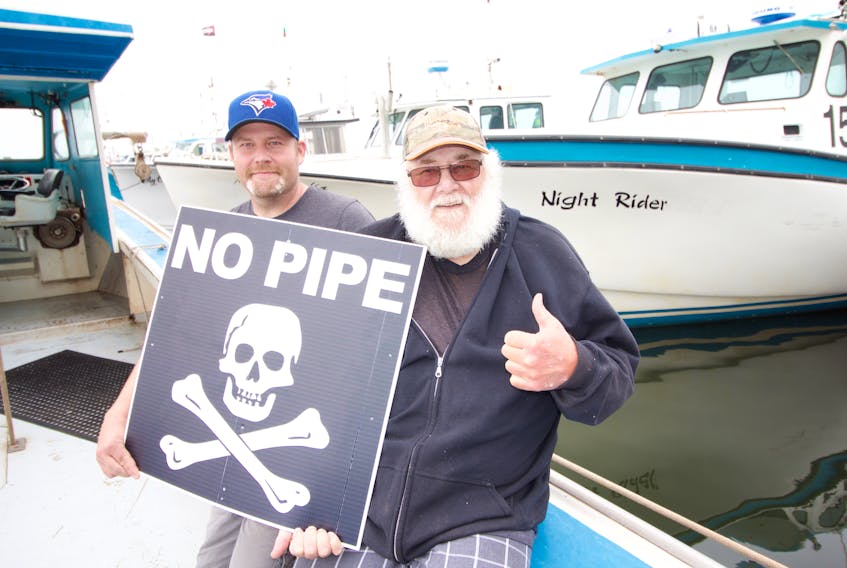BY IAN MACPHERSON
GUEST OPINION
As the media coverage of the proposed Northern Pulp effluent pipe in the Northumberland Strait ramps up, it is important to understand the concerns of Island fishers on this important issue.
For generations, Island harvesters have fished side by side with their Nova Scotia counterparts in the area that will be impacted directly by the proposed project. The Prince Edward Island Fishermen’s Association, Gulf Nova Scotia Fleeting Planning Board, Maritime Fishermen’s Union and Pictou Landing First Nation are united in opposition to this project.
The proposed pipe is required due to the closure of the Boat Harbour treatment facility where mill effluent is currently being discharged. This facility will be closed in January 2020 directed by the Boat Harbour Act of 2015.
The proposed replacement facility is long overdue as the Pictou Landing First Nation has endured an environmental disaster on their lands that rivals the infamous Sydney Tar Ponds.
The current Boat Harbour process provides a settling time of approximately 30 days before a low flow is discharged into surrounding water. During this time, organics, heavy metals and other contaminants in the effluent have a chance to settle.
The proposed new system offers a mere 8 hours for settling before discharging 65 to 90 million litres per day into the Northumberland Strait. As a point of reference this water volume is more than the entire Municipality of Halifax uses in a day.
The effluent will be fresh, warm treated water that will contain a mix of chemicals of an unknown composition. The dispersion model projections presented are based on information acquired during a very limited (1 month) sample period.
This discharge will be a steady 24 hours a day, year-round. The total backup for a plant upset will only be eight hours. The plant then must shut-down or discharge directly into the Strait.
From a marine perspective, the Northumberland Strait is a unique eco-system. There are gyres (continuous circulating ocean currents) located at each end of the strait making it a self-contained unit. Residence time of water in the Strait can be weeks to months, increasing chances of effluent accumulation. Unfavourable conditions will cause the migration of marine animals from the area.
We have not been given a list of the chemical composition of the effluent, but have been told by mill representatives that there would be more solids released from the new system. There is not enough information to prove that negative impacts will not occur to marine species or their environment.
There are contaminants documented in kraft-bleached pulp mill effluent that can disrupt shell hardening in lobsters. There are also numerous hormone disrupting contaminants documented in similar effluents which have a negative impact on numerous fish species. This poses a great a risk to numerous species that depend on a healthy ocean environment for survival.
Herring is one of these species and one of their main spawning beds in the Gulf of St. Lawrence is located not far from Pictou and Caribou Harbour. Damage to this spawning bed will negatively impact the regrowth of the herring biomass.
Those in support of the project state that the pipe will meet current environmental standards and many pipes discharge into the waterways of Canada. These current environmental standards are presently under review.
Our research shows areas on the west coast of Canada that are permanently closed to bivalve fishing due to contaminants in the water, most likely due to these types of discharges.
have a worldwide and world class brand that needs to be protected.
The insistence that a 1 meter diameter pipe discharging millions of liters per day into the ocean is the only technical option available in 2019 is frustrating. We understand that all mill discharges are not the same but find that no other technical options are possible - questionable.
It is not the fishing community that is advocating closure of the mill but a Northern Pulp company slogan that states “No Pipe = No Mill.”
Our fishing organizations remain steadfast in requiring a federal environmental assessment be carried out at the very least.
Any compromise of one industry over the other will be at a cost that Canada cannot afford.
- Ian MacPherson, general manager of the P.E.I. Fishermen’s Association; science information provided by PEIFA marine biologist Melanie Giffin.
RELATED
- VIBERT: Forest sector will fight for Northern Pulp
- P.E.I. Opposition renews call for further Northern Pulp environmental assessment
- Tories push P.E.I. premier on Northern Pulp issue
- UPDATE: Northern Pulp pipeline could harm herring spawning beds, say P.E.I. fishermen
- ‘Everyone is not going to be as friendly as me’: Survey boat mapping Northern Pulp effluent pipe forced back to shore
- Paper Excellence quells rumours protests are causing company that owns Northern Pulp to pull out of Pictou County
- Two federal ministers offer differing statements on Northern Pulp
- Officials with Northern Pulp mill in Pictou County, N.S., testify before P.E.I. standing committee









